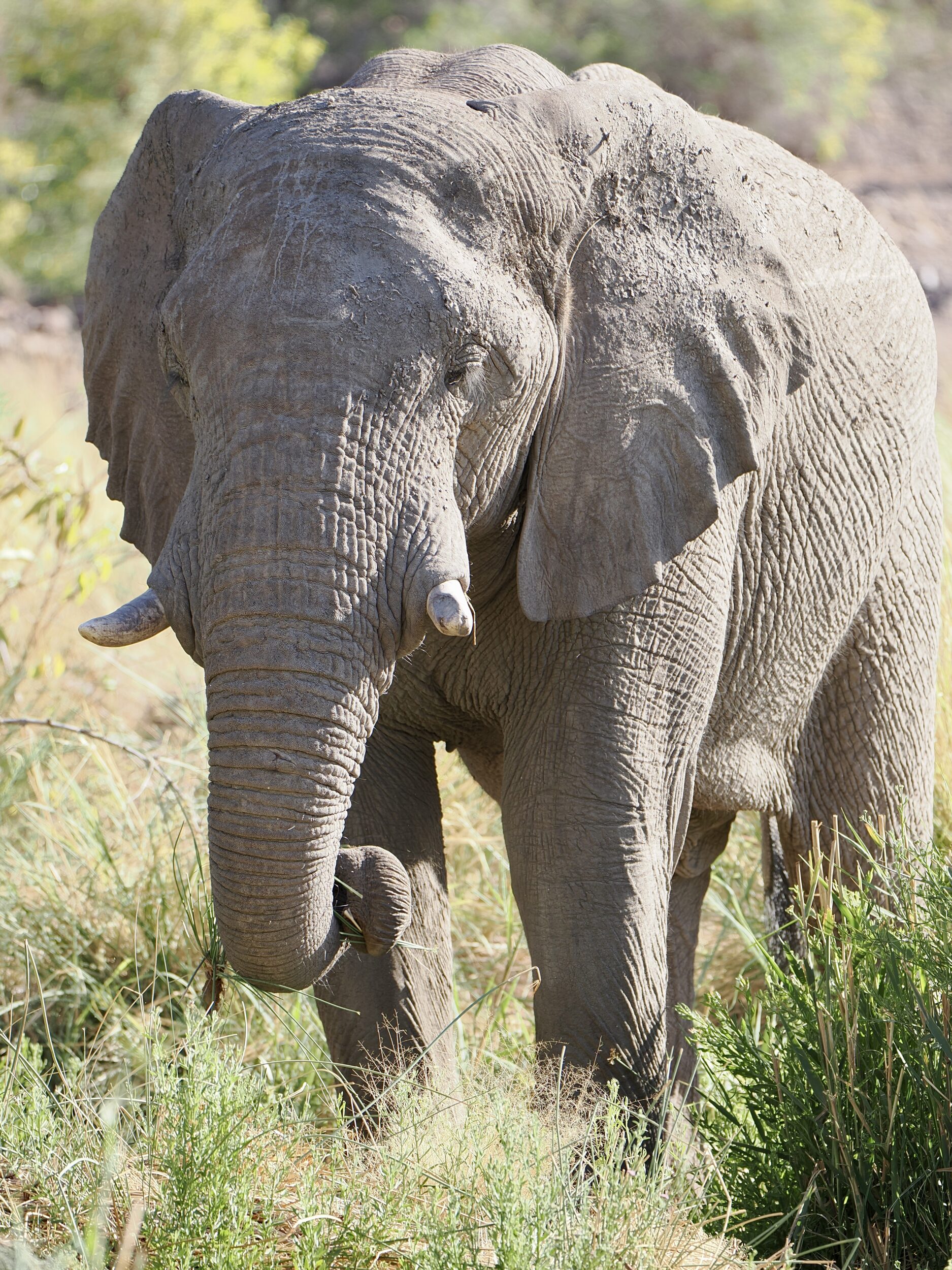Jimbo – this chapter’s star individual – is an adult, desert-adapted elephant.
As is generally true of adult bull elephants, his is a mostly-solitary existence.
Only two nations are now home to desert-adapted elephants: Mali and Namibia.
Namibia’s live in that nation’s northwestern corner (some of them do set foot in the southwest corner of Angola) – an area long known as “Damaraland”, although the currently-preferred name is “the Kunene Region”.
Contrary to popular misconception, they do not comprise a separate species; desert elephants and African bush elephants (aka “African savanna elephants”) are fellow members of Loxodonta Africana, the current world’s largest terrestrial mammal species.
The desert-dwellers are very different/distinctive, but what sets them well apart from savanna/bush elephants is largely a matter of behaviour/culture rather than genetics.
As you can surely see, Jimbo is not young.
However, I think, his is a much “easier” life than that generally endured/enjoyed by an aging male of his kind.
Desert-adapted elephants generally walk vastly greater distances than do other members of their species; they are also likely to drink less often, drink less water in total, and also, perforce, to consume less food.
Jimbo is lucky; I am pretty sure he walks less – and eats and drinks both “better” and more/more often – than do most of his peers.
The “enlightened self-interest” of tourism-adapted/tourism-dependent humans can sometimes harmonise with the “enlightened self-interest” of desert-adapted elephants.
Anyone who chooses to stay at Palmwag Lodge is highly likely to enjoy a relatively close encounter with a desert elephant…or, at least, with one particular individual, who is not “tame”, but not hugely wary.
Clearly, Jimbo knows that he is “onto a good thing” and that he has no need to roam very far.
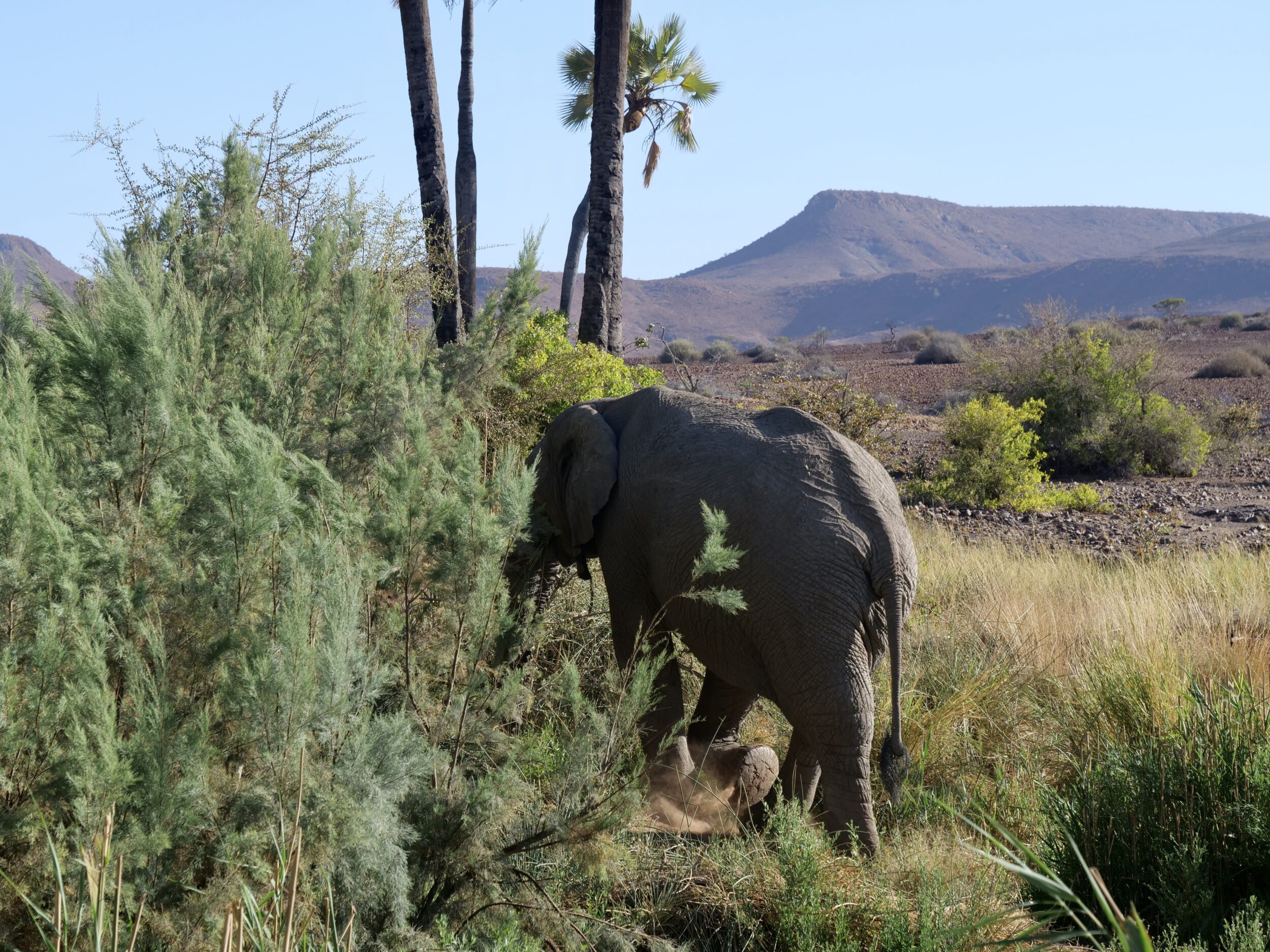
In the above photo you can see the sole of Jimbo’s right front foot; typically, desert-dwellers’ soles are larger than those on savanna/bush elephants.
This just might be one instance of natural selection producing an actual physical difference.
For desert elephants, bigger feet probably are advantageous.
They spend much of their lives walking along usually-dry, sandy riverbeds, and they sometimes need to dig “wells” in them.
A larger sole spreads weight, thus making walking in sand a little easier.
Presumably, bigger feet also make more effective “shovels”.
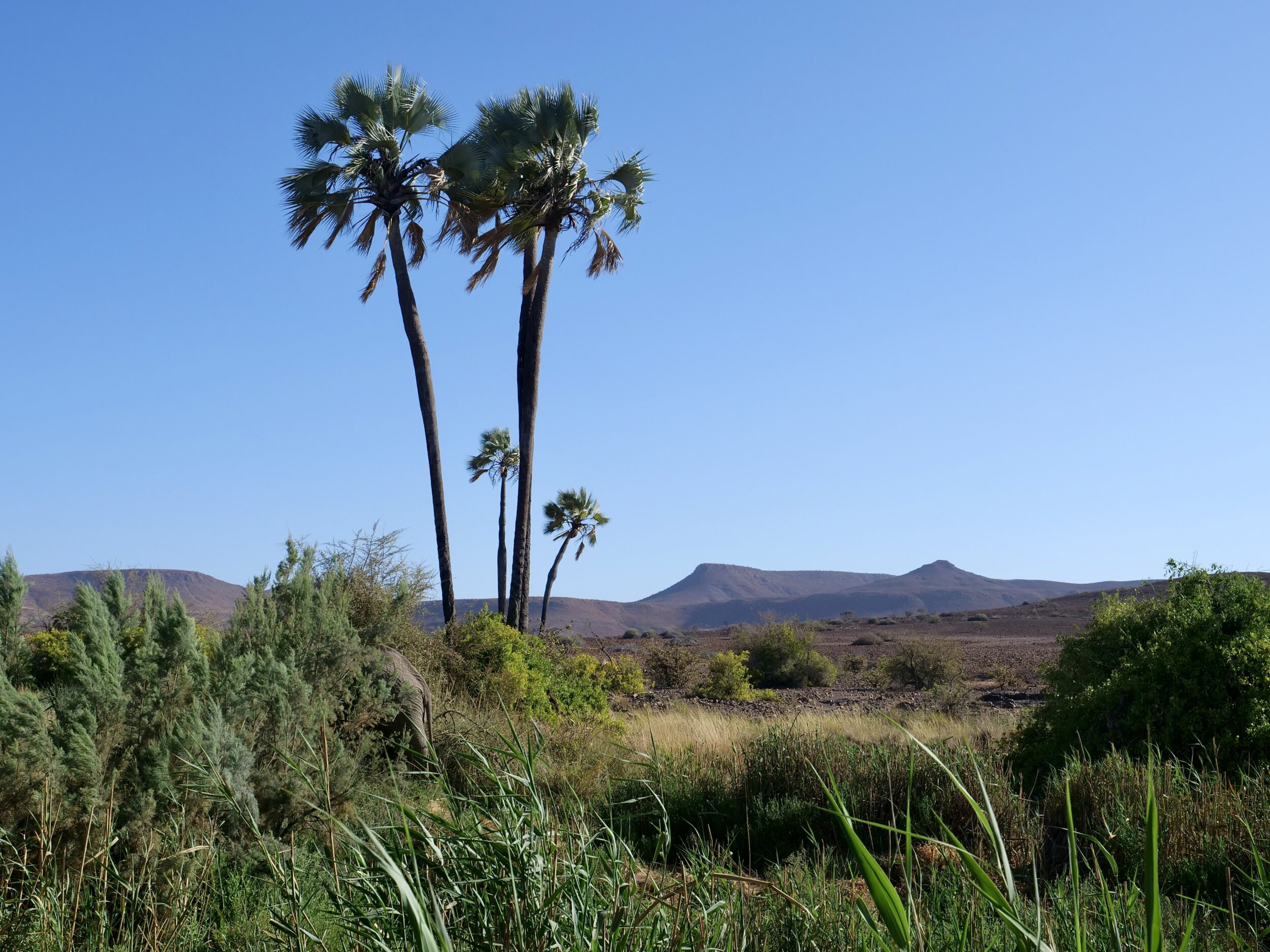
The other oft-remarked-on “physical difference” – that desert elephants “look taller” – probably has nothing do with genetics/natural selection/evolution.
This “difference” is probably an optical illusion; give a very large-framed mammal a poorer/leaner/drier diet than its peers, and its “physique” will almost certainly change…but not the relative sizes of its skeletal components.
However, the leaner/slighter beast will likely look taller, given that the bottom of its (smaller) belly is much less-distended than that of a (relatively) corpulent savanna/bush elephant.
Also, with a desert elephant, a human observer often has a full view, “head to toe”.
With a savanna/bush elephant, a human often sees the “top half, only” – long grass and/or low bush frequently obscure the “bottom half”.
In any event, elephant’s’ intelligence and memory are key factors in what makes desert elephants “different”.
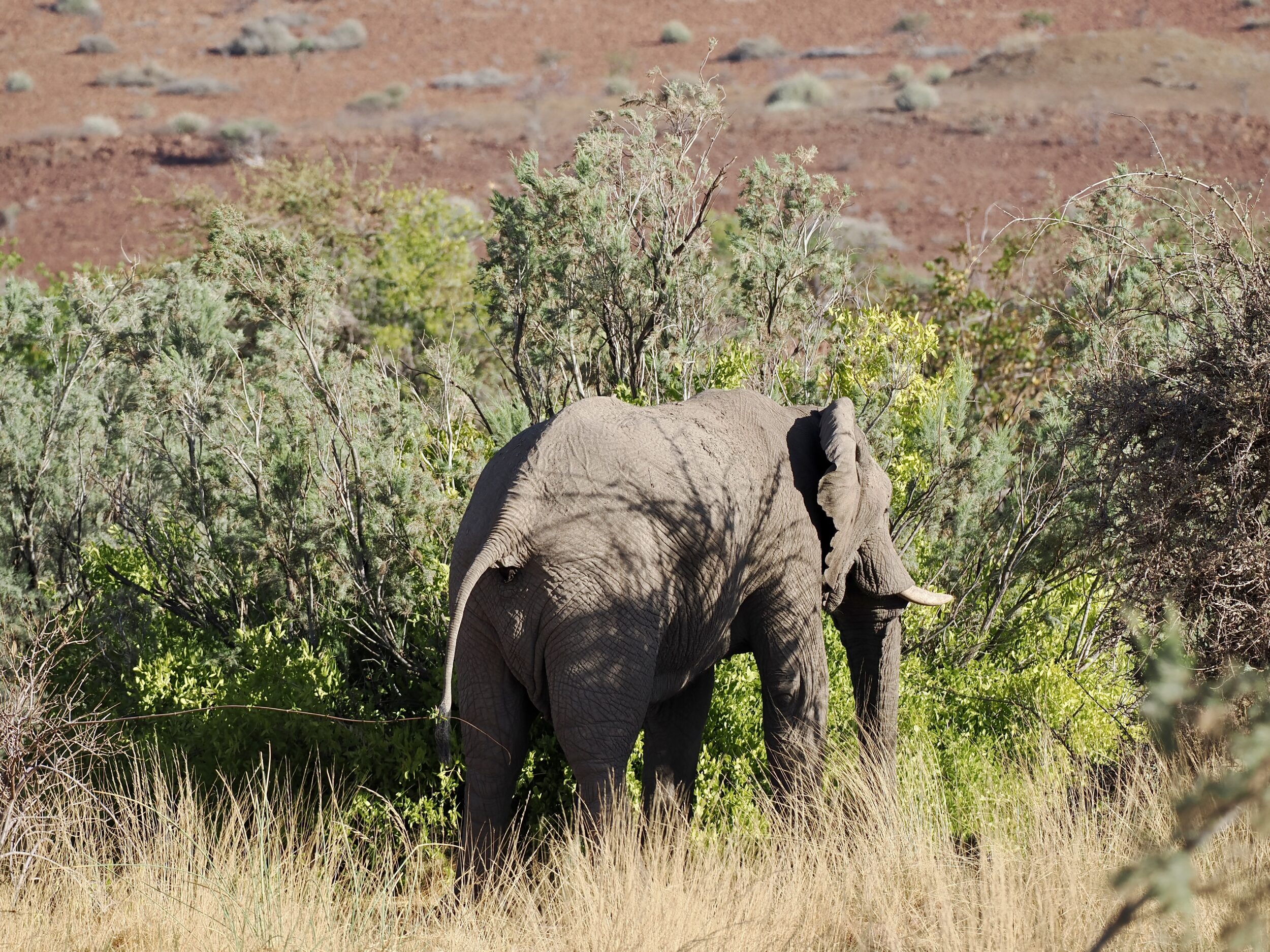
Strangely under-remarked upon – but very evident – is that desert-adapted elephants eat and move much more carefully than do bush/savanna elephants.
Where “reliable” wet seasons exist, water is easily-accessed, and vegetation grows/regrows rapidly, elephants are decidedly “casual” about their own impact.
An “inconvenient” tree can be shoved out of the way, perhaps fatally, for that tree.
Another tree or bush can be overgrazed, perhaps fatally; for a savanna/bush elephant, there are always “ plenty more trees”.
Desert-adapted elephants are very obviously aware that such behaviour could prove fatal, in habitat where water is extremely difficult to obtain, and every tree is precious, and probably slow-growing.
Desert elephants take care not to kill what sustains them.
As is also true of indigenous humans in arid environments, they are not extravagant with water, they know exactly where/how to find it, and how to keep it “safe”. (or make it so. For instance, they know that a stagnant pool’s water may be dangerous, that it might be well worth the effort of digging into a “dry” riverbed in order to reach cleaner water)
They pass on such knowledge, through many generations.
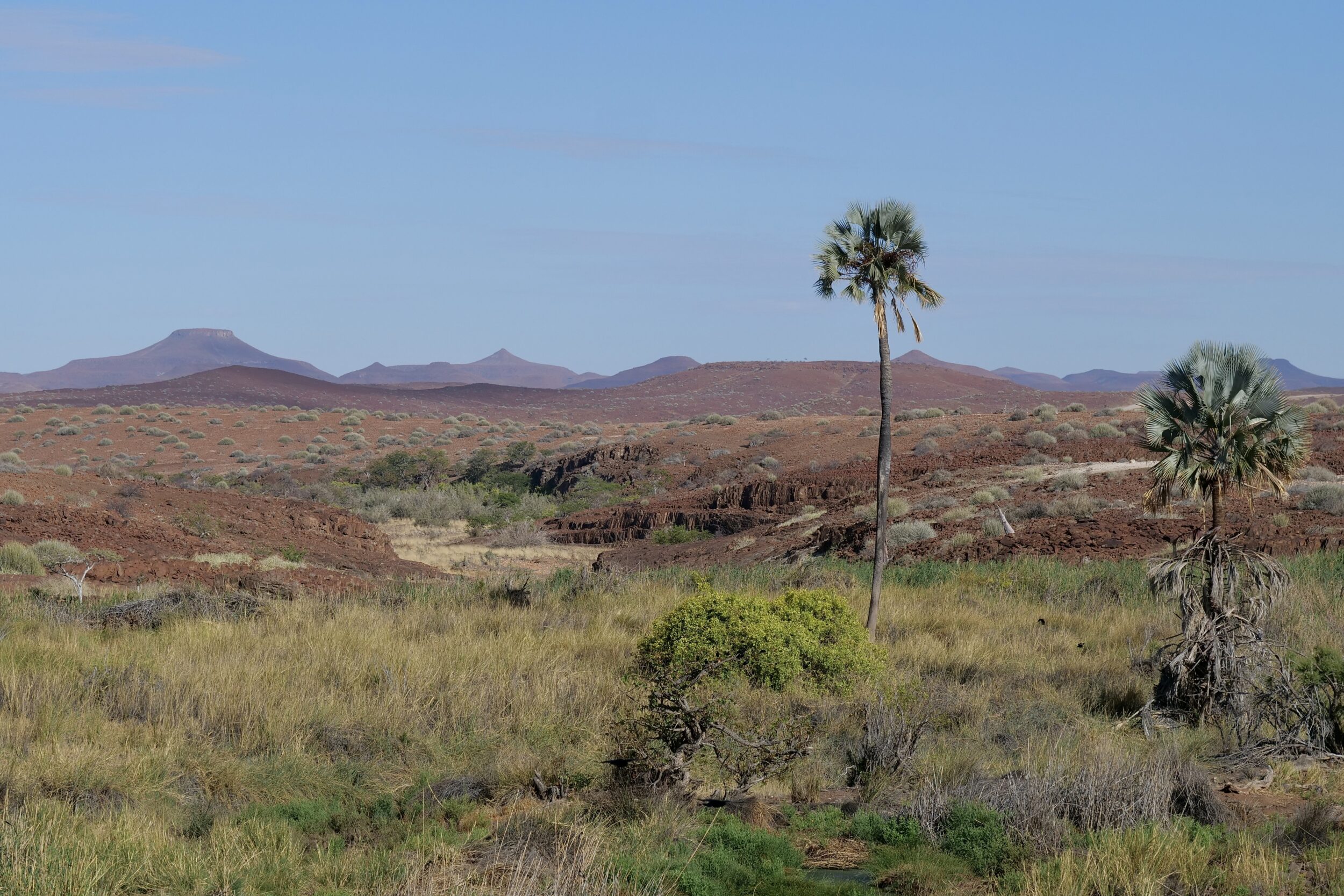
Poaching is not currently a significant threat to Namibia’s small population of desert-adapted elephants. (Namibia is also home to a much larger number of bush elephants)
However, both climate change and “conflict with humans” do threaten their very existence; those two issues are oft-intertwined
As their very demanding natural habitat becomes yet hotter and drier – and yields a diminishing or less reliable supply of food and water – desert-adapted elephants are increasingly likely to clash with human herders/graziers and agriculturalists.
The “picture” is fast-moving, “facts” are much-contested, and points of view are diverse; accordingly, anyone who wishes to know “what is really going on with Namibia’s desert elephants” should not rely on just a single source of “information”.
That said, this recent article provides a succinct, clear overview.
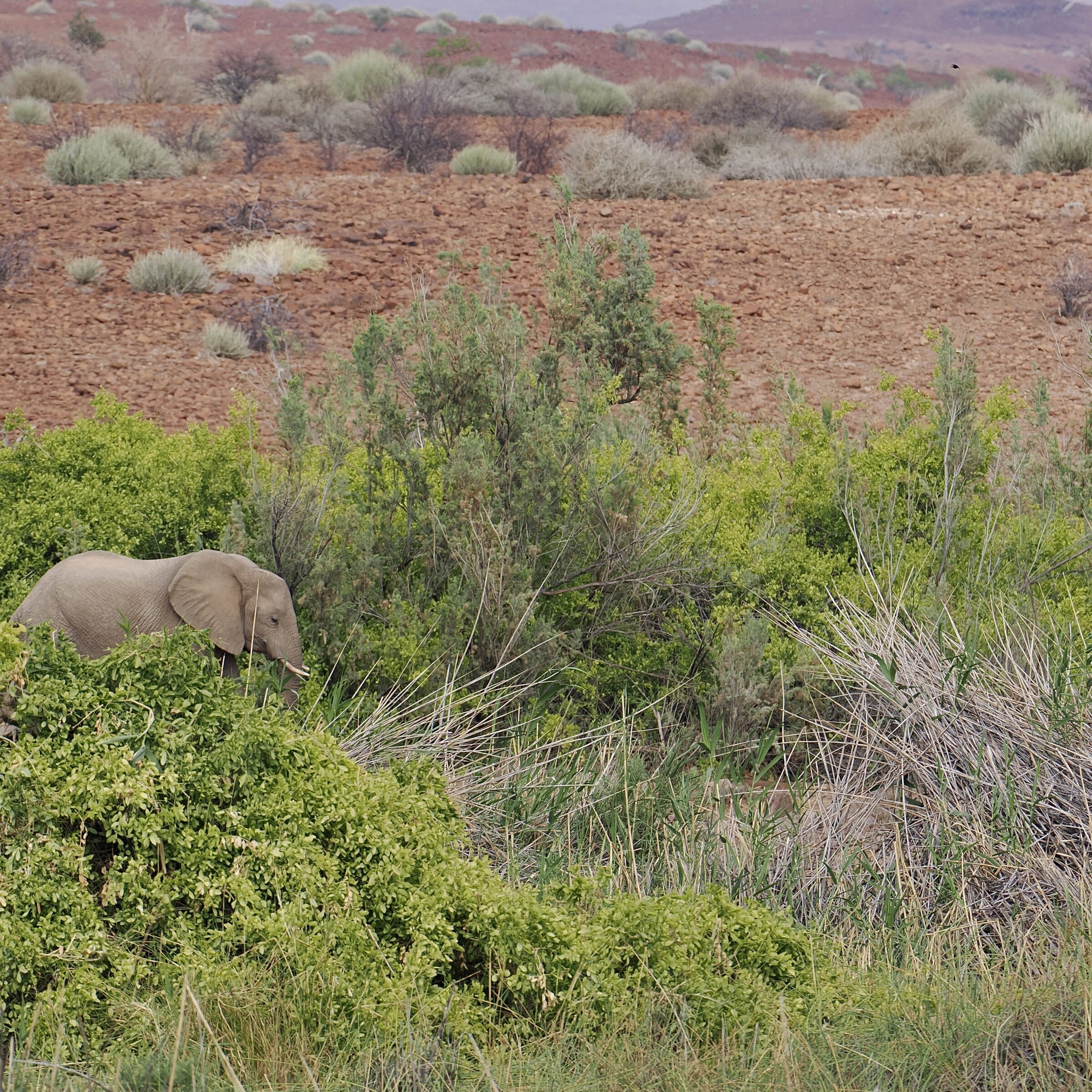
This trilogy’s final chapter is the fruit of a very surprising, astonishingly close encounter with a group of desert-adapted elephants.
